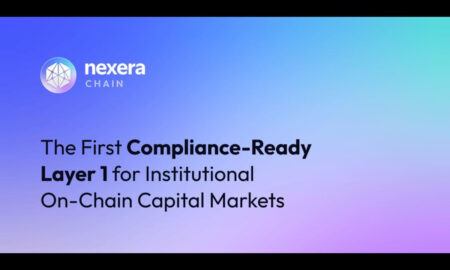This article is brought to you by OKEx, for more insights visit their blog.
As the second quarter of 2019 gets underway on the heels of an impressive bitcoin and altcoin price rally, more and more eyes are turning back to the crypto markets after the longest bear market in the young industry’s history.
Whether the bear market is truly over and we have reached “full capitulation” remains to be seen, but it’s important to see what this second quarter of 2019 might have in store.
Let’s take a look at three key trends that may set the stage for crypto this summer and beyond.
Initial Exchange Offerings (IEOs)
The crypto world loves initialisms – ICOs, STOs, PoW, P2P. IEO – Initial Exchange Offering – is the latest, and has unquestionably been the new one for 2019.
In essence an IEO is an ICO, but launched exclusively via an exchange, and with the exchange’s vetting and backing. Furthermore, tokens are often only purchasable using the exchange’s native token.
This new model of token sale has garnered a lot of attention in the first quarter of 2019, and seen interest in the altcoin market pick up after a very dismal 2018. Several exchanges have launched their own IEO platform and new IEOs are being listed every week.
Many in the industry see IEOs as an improved model that will bring new funds into the market.
There are some significant benefits for investors when compared with the standard ICO model. Firstly when an exchange lists the token they can rest assured that substantial due diligence has gone into the project. Secondly it means that the tokens are tradable instantly, meaning that investors can buy and sell straight away, much like an IPO.
The project’s themselves also benefit as they can save time on marketing and technical expenses involved with issuing tokens directly, giving them more time to focus on the project itself.
It also makes sense for exchanges as they can attract new users and earn placement fees. It’s no wonder why the ICO model has been reimagined and has proven popular.
OKEx‘s new IEO platform, JumpStart is gaining popularity as part of this new altcoin scene. As part of this new model which aims to ensure greater scrutiny of the projects involved, OKEx has taken the novel step of asking users what they think can be improved about their existing rules for token sales:
The 2nd round of OK Jumpstart is starting soon! We understand that our rules are far from perfect and that's why we need your feedback. Please help us improve our token sale by commenting your suggestions below. We'll pick 5 best comments and prize 10 USDT each on Apr 18. pic.twitter.com/82OHgPjgUw
— OKEx (@OKEx) April 12, 2019
Bitcoin ETF
One of the themes that has dominated headlines in the last year and a half has been the hotly-anticipated decision from the U.S. SEC regarding the VanEck SolidX Bitcoin ETF (Exchange Traded Fund) application. Every announcement, delay and new deadline for the application’s approval has spurred a deluge of news articles, tweets and bitcoin price movements.
A bitcoin ETF would allow investors to invest and trade in a vehicle which tracks the performance of bitcoin, but without the need to actually own any. The reason for the excitement surrounding the ETF is that in theory it will draw in a much larger institutional crowd who have so far stayed on the sidelines of crypto investing due to wariness about compliance, concerns about security and the lack of infrastructure which exists with traditional financial assets. Gabor Gurbacs, Head of Digital Assets at VanEck, concisely summarizes what he thinks the ETF brings to the table:
I believe, a #Bitcoin #ETF serves the public interest via:
+ Increased liquidity using the ETF ecosystem
+ Lower counter-party risk
+ Better valuation & execution practices
+ Separation of duties: trading, custody, valuation
+ Transparent fees
+ Established compliance framework pic.twitter.com/OB0XUZeJ1O— Gabor Gurbacs (@gaborgurbacs) February 3, 2019
Not all actors in the crypto ecosystem however, agree.
Bitcoin veteran and author of Mastering Bitcoin, Andreas M. Antonopolous, believes that while a bitcoin ETF will eventually be approved, ultimately it will be “damaging to the ecosystem.”
For Antonopoulos, although a bitcoin ETF may move prices and volumes, much like it did when introduced to the gold market, it fundamentally runs counter to the decentralized ethos which animates the Bitcoin experiment:
I’m going to burst your bubble…I know a lot of people really want to see an ETF happen because “to the moon and lambos!” But I think it is a terrible idea. I still think it is going to happen, I just think it is a terrible idea. I’m actually against ETFs.I think a Bitcoin ETF is going to be damaging to the ecosystem.
What seems almost universally agreed upon by both critics and proponents alike however, is that it if a Bitcoin ETF is approved, it will have a marked effect on the bitcoin (and likely other cryptoassets’) price and volumes as institutional money flows in.
While the SEC has delayed and extended the period of approval on several occasions, the latest deadline set by the body is May 21. Whether this will be the final, ‘final’ deadline, or there will actually be an approval – remains to be seen.
Decentralized Finance (DeFi)
Another trend to take note of in 2019 is Decentralized Finance or ‘DeFi.’ A broad term which encompasses a range of financial tools built on a blockchain including stablecoins, prediction markets, lending protocols and exchanges (among others), it is now garnering attention as the amount of money moving into DeFi grows.
According to data provider DeFi Pulse, there is already 2.5 million ether (ETH), or nearly $420 million locked in by smart contracts issued on dApp networks.
One of the most prominent companies in the space is Maker. The company’s decentralized autonomous organization (DAO) supports Dai – a stablecoin pegged to the value of the USD. Using an innovative system to ensure stability, users lock in ETH as collateral to open what’s known as a Collateralized Debt Position. As it stands, MakerDAO is now holding $367 million worth of ETH.
Bitcoin’s Lightning Network is also considered to be part of the DeFi ecosystem, currently holding over $5m of value, having grown enormously from less than $100,000 just over a year ago. It is hoped that the layer two scaling solution will allow bitcoin to scale transactions and become a fast and cheap medium of exchange.
Other notable examples of DeFi include Dharma ($2.7 million), whose Protocol enables decentralized, tokenized lending on Ethereum, and Augur ($1 million), the decentralized prediction markets platform.
With more and more money entering the DeFi ecosystem every week, and the promise of broadening the world of financial services beyond its traditional bounds, this sector is poised to revolutionize finance and bring crypto into the mainstream. This sector is definitely one to watch this quarter.









